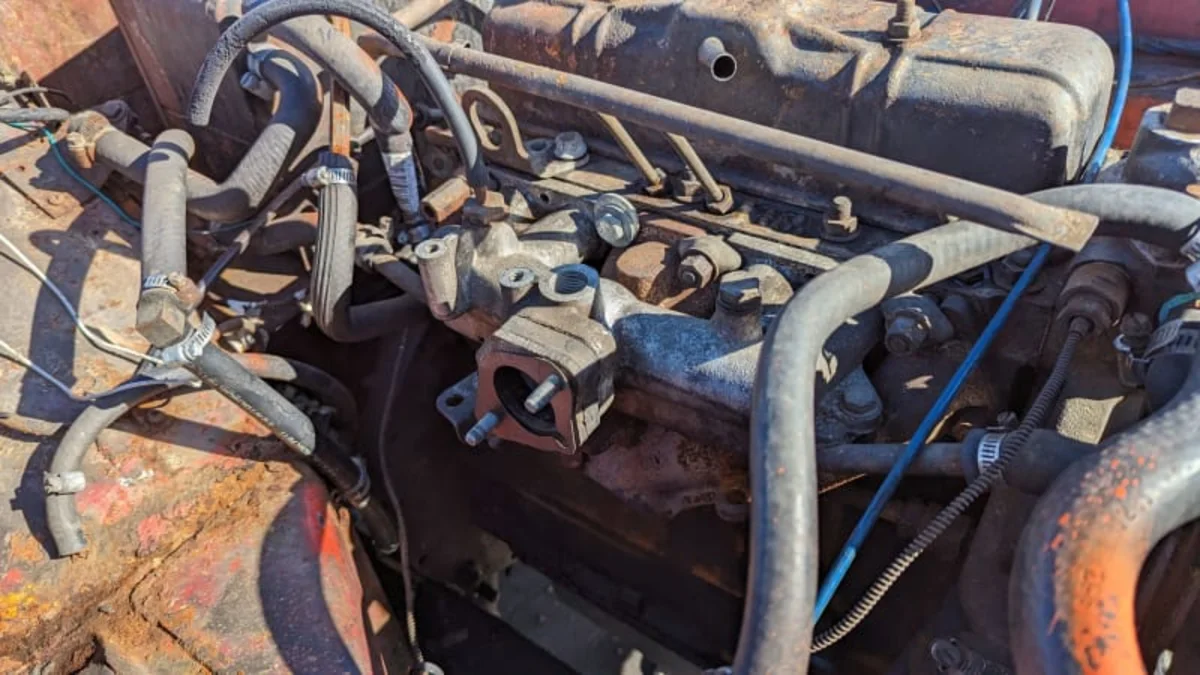Junkyard Gem: 1976 MG Midget

During the middle 1970s, British Leyland offered car shoppers in North America four different two-seat convertible sports cars: the Triumph TR6, the Triumph Spitfire, the MGB and the MG Midget (the convertible version of the Triumph TR7 didn’t go on sale here until the 1979 model year). Of those four, the cheapest was always the Midget, and there was a time when those affordable, fun Midgets roamed all over the highways of California. Today’s Junkyard Gem is one of those cars, found in a San Francisco Bay Area self-service boneyard a couple of months ago.
The Midget name goes way back in MG history, to the Morris Garages Limited company in 1928. That’s when the M-Type Midget went on sale, and lots of other Midgets followed over the next few decades. This generation of Midget began life as a 1961 model, and it was an Austin-Healey Sprite with MG badges installed. Sprites and Midgets were essentially identical (and were collectively known as “Spridgets”), but the Sprite got the axe after 1971 while Midgets were built through 1980.

In 1976, the MSRP of a new Midget was $3,895, or about $21,252 in 2023 dollars. The 1976 Triumph Spitfire was lighter (1,828 pounds versus the Midget’s 1,854 pounds), but its sticker price was $4,250 ($23,189 now) and it had three fewer horses under the hood.

Of course, those horsepower numbers were hilariously low for both cars (which, starting in 1974, shared variations of the same 1.5-liter Standard SC engine). This one was rated at 55.5 horsepower.

Earlier US-market Midgets had dual SU carburetors, but a single Stromberg was used for the Malaise Era versions.

Federal emissions regulations really strangled the output of US-market MG engines (which were ancient-technology pushrod mills in the first place) during the mid-to-late 1970s. Catalytic converters were very restrictive back then, and there was a power-sucking air pump bolted to the engine as well.

On top of that, American bumper and headlight-height regulations meant that hideous and enormous rubber-covered bumpers were bolted to these cars and the suspension was lifted. Say what you will about 1974-1980 Midget bumpers, but the Spitfire’s bumpers were even worse.

I’ve put many miles on 1970s Midgets, and I can say from that experience that they feel a lot quicker than they actually are (a same-year Honda Civic will eat up a Midget in just about any kind of race). So what? MG Midgets are lovable.

The transmission on every new Midget sold here was a good old four-on-the-floor manual.

This one is too rough to be anywhere near worth restoring, since even very nice black-bumper Midgets don’t sell for much these days. Like MGBs and Fiat 124 Sport Spiders, Midgets tend to sit in driveways and yards for decades, awaiting repairs that never come, and so I still see plenty of them during my junkyard travels.
Strong. Honest. Fun. Young. Take it to the skate park!
Test-drive a Midget or MGB and you could win a 1948 TC.



